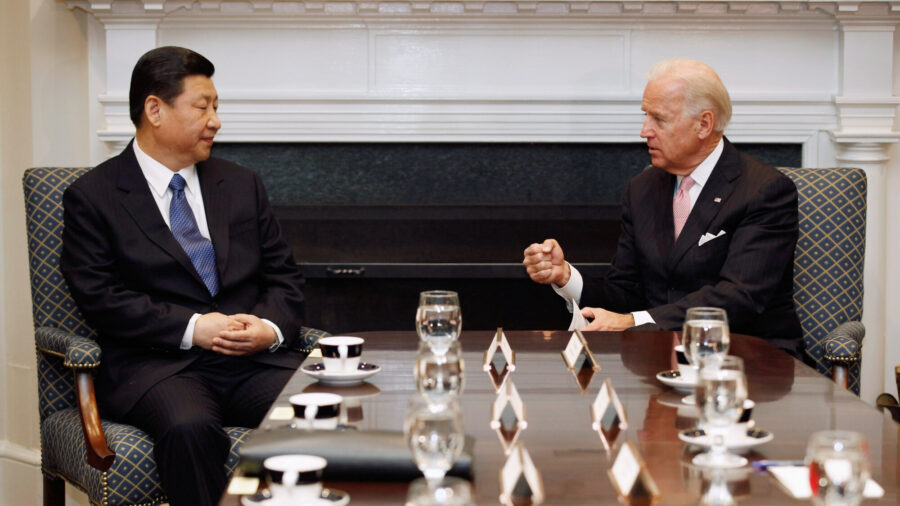WASHINGTON—China has fallen short on meeting its pledges in the “phase one” trade agreement signed last year and the Biden administration will soon commence a review of the deal to determine a proper policy response.
Treasury Secretary nominee Janet Yellen said there would be no immediate moves to lift punitive tariffs on Chinese imports that were imposed by the Trump administration.
“We are closely monitoring China’s adherence to all of its Phase One commitments, including both the purchase commitments and structural commitments,” she said on Jan. 21, in a written response to questions from the Senate Finance Committee following her confirmation hearing this week.
The phase one trade deal signed in January last year requires Beijing to buy $200 billion worth of additional U.S. goods and services over 2020 and 2021 from 2017 levels.
Analysis of Chinese trade data by the Peterson Institute for International Economics (PIIE) showed that China has met about 58 percent of its purchase target of all U.S. goods covered by the phase one trade deal.
“Through December 2020, China’s total imports of covered products from the United States were $100.0 billion, compared with the target of $173.1 billion,” the PIIE stated in its report.
China met only 64 percent of its purchase commitment for U.S. farm goods, 60 percent for manufactured products, and 39 percent for energy products, according to the report.
U.S. farm exports have been crucial for the phase one deal, as China was the largest export market for U.S. agriculture in 2017 before the trade war began. And U.S. farmers were particularly hard hit by Beijing’s retaliatory tariffs.
China has a fifth of the world’s population, but it has only one-tenth of the world’s arable land. That means the country is heavily dependent on imports of farm products, particularly soybeans, cotton, sorghum, wheat, and nuts.
Under the phase one agreement, China was required to increase its U.S. farm purchases by $12.5 billion in 2020 and by $19.5 billion this year from the 2017 baseline level of nearly $24 billion.
Last year, the Department of Agriculture expressed disappointment over Beijing’s slow progress on meeting its pledges in the trade deal.
In order to satisfy the deal, Beijing has accelerated its purchases sharply in recent months despite the pandemic. It’s unclear how the Biden administration would compel Beijing to follow through on its promises.
Yellen, in her response to senators, stated that the Biden administration would “engage in a comprehensive review of all aspects of the Trump Administration’s trade policies toward China, including how completely Beijing has lived up to the terms of the Phase One Agreement.”
“As part of his review, [Biden] is going to consult with allies to galvanize collective pressure. We need a different approach that actually brings meaningful pressure on China,” she said.
On Jan. 11, then-Trade Representative Robert Lighthizer praised the Trump administration’s trade policies and urged the incoming administration to keep tariffs on China.
“We transformed the way people think about trade, and we transformed the way the models are,” Lighthizer told The Wall Street Journal in an interview. “My hope is that that will continue.”
The Trump administration maintained tariffs on nearly $370 billion worth of Chinese goods, citing China’s unfair trade policies, including intellectual property theft, forced technology transfers, government subsidies for domestic companies, and restricting foreign access to Chinese markets.
The phase one trade deal doesn’t fully address these longstanding structural issues.
During the signing of the phase one agreement, then-president Donald Trump said that he would retain U.S. tariffs as a bargaining chip for the second phase of the deal. After the pandemic, however, he expressed hesitation about negotiating a phase two agreement with China, especially after Beijing’s mishandling of the COVID-19 outbreak.
It’s unclear whether the United States will make progress on resolving trade issues with Beijing under the Biden administration. Some experts have expressed skepticism over whether the Chinese regime can truly commit to structural reforms.
Yellen said in her written statement: “The economic dimension of U.S.-China competition is crucial. And we will take on the challenge of China’s abusive, unfair, and illegal practices.”
She criticized China for “undercutting American companies by dumping products, erecting barriers, and giving illegal subsidies to corporations” as well as engaging in policies that give Chinese companies “an unfair technological advantage” over U.S. businesses.
From The Epoch Times


